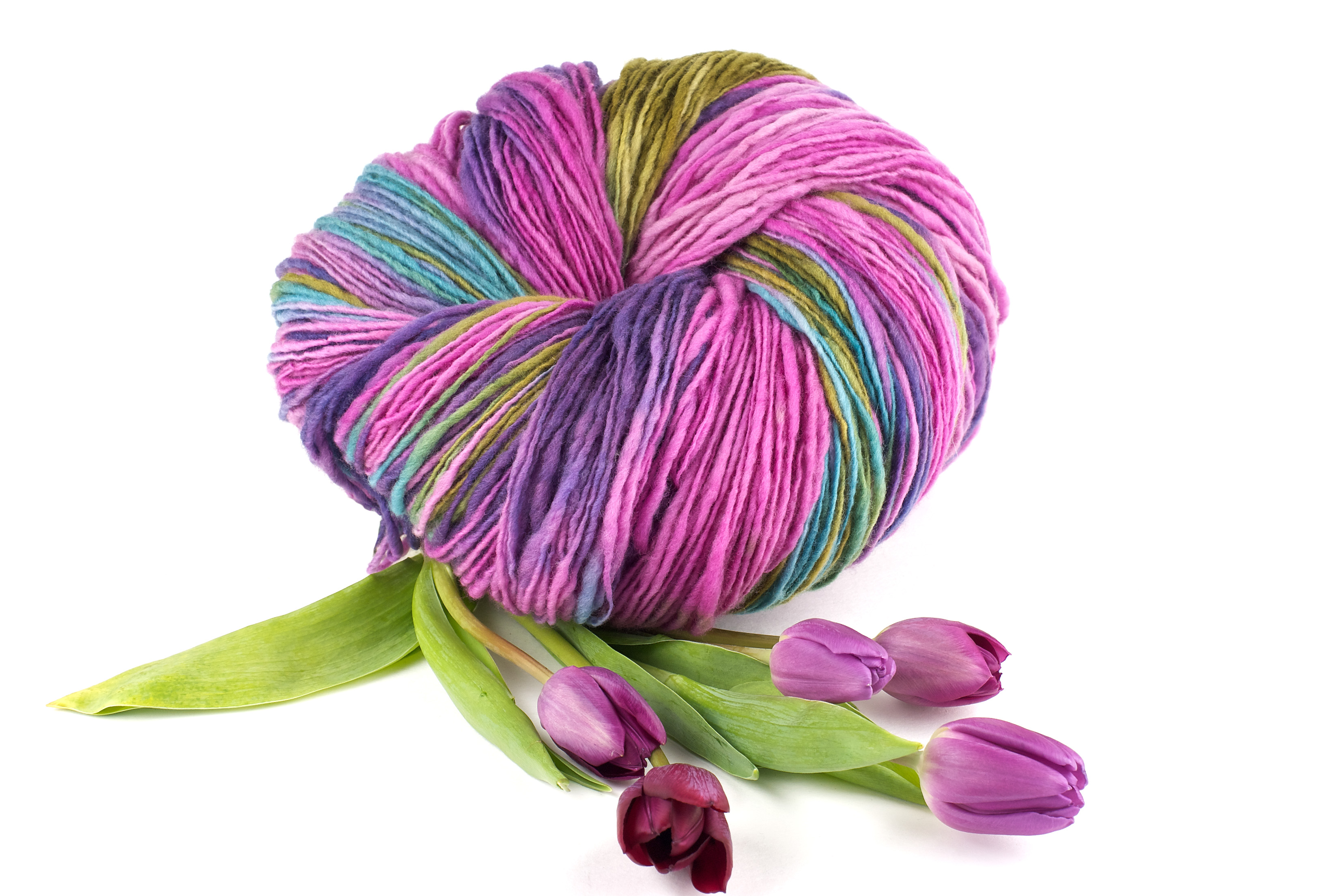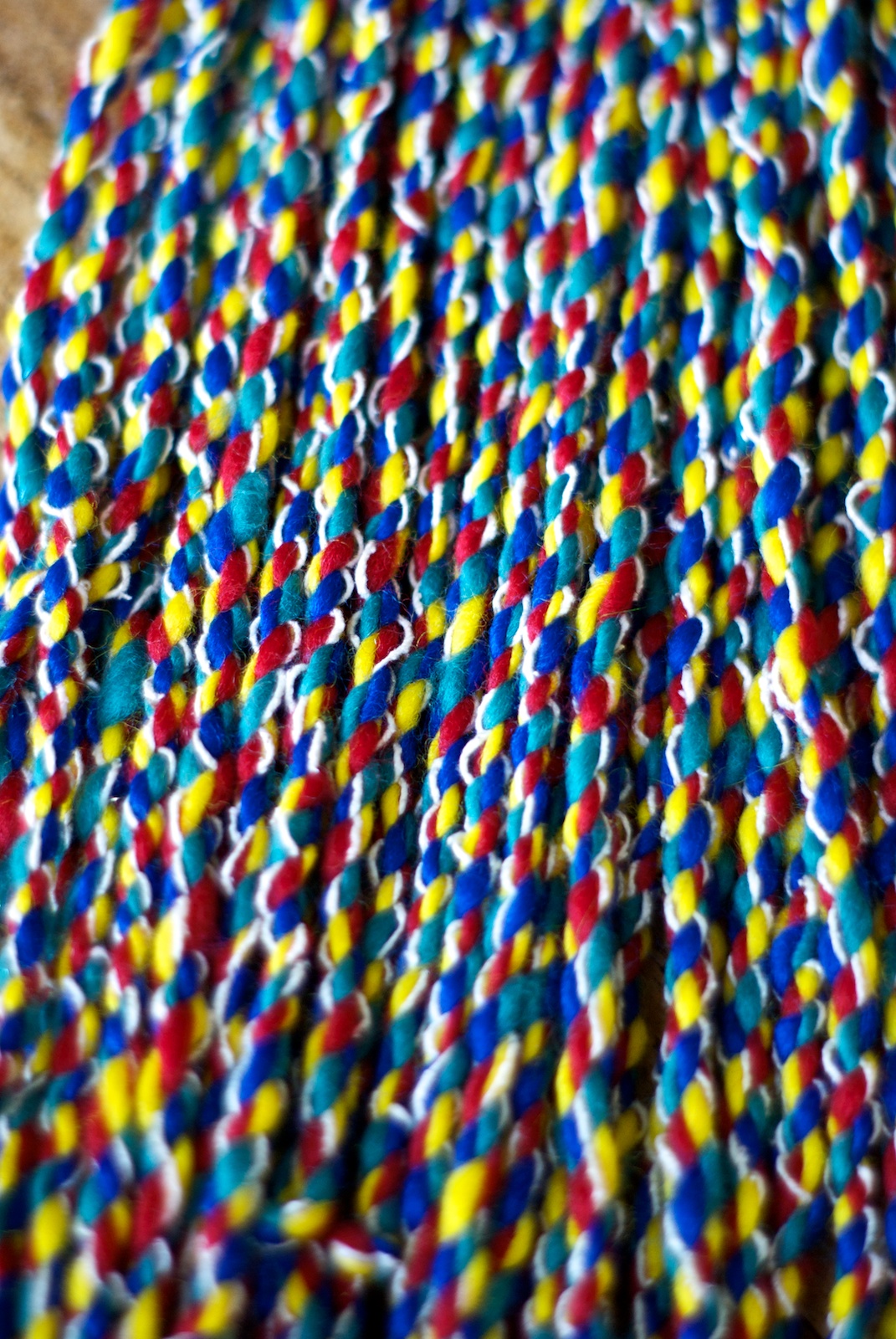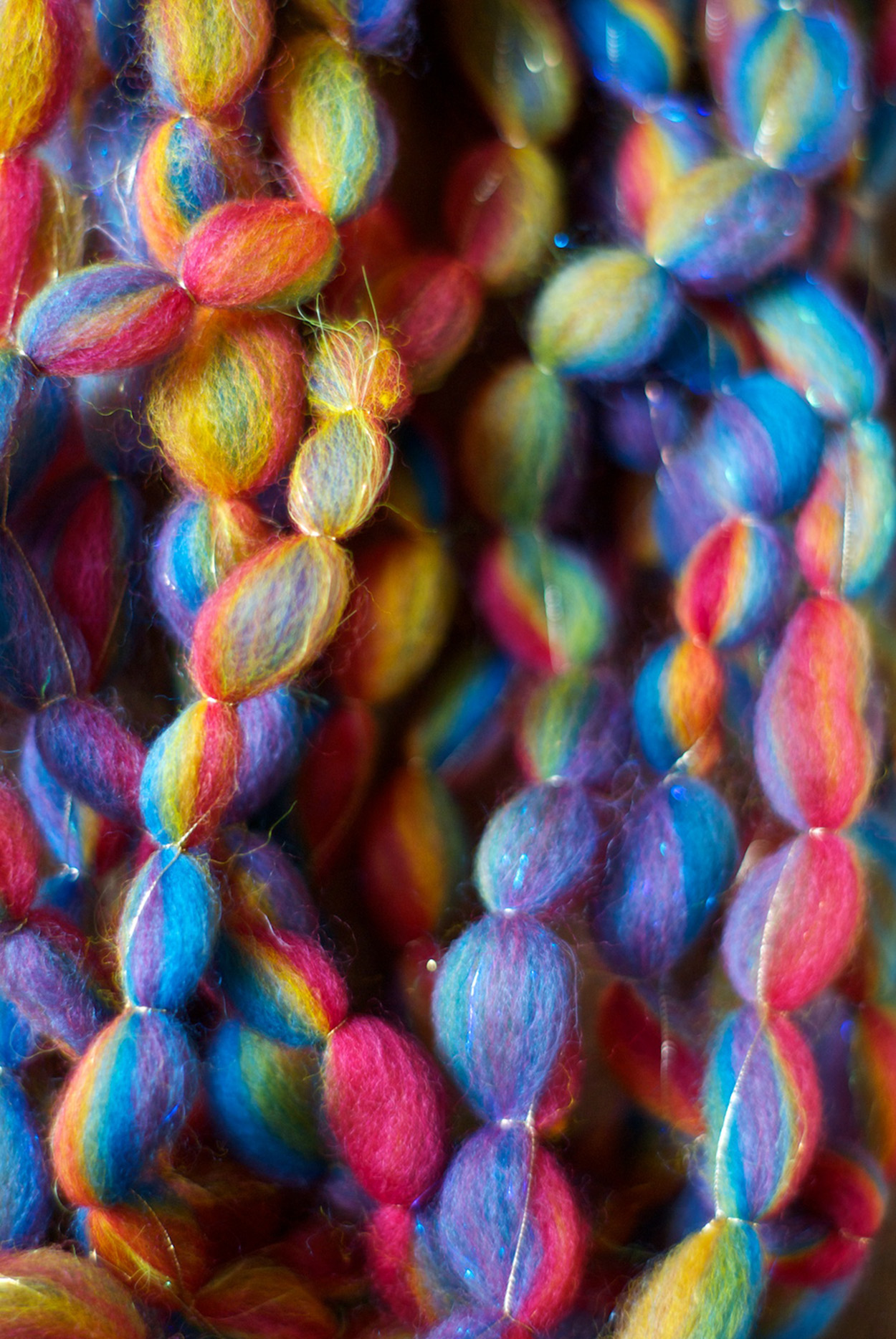I have a dear friend here in New Zealand, and she happens to be involved in a subgroup of our National Spinners and Weavers Guild (Creative Fibre NZ). Now Angela is one of those people who is always coming up with awesome ideas, and she loves to offer challenges, the lastest one is ‘we’ (as in everyone she can catch for 2 seconds) must spin a single to contribute to the collection of samples that Angela is building, and she regularly sends out examples of different kinds of yarns that are sent to her, its a really cool thing! Anyway, this current challenge, to spin a single in any way we like, it has me a little stumped. Because I am not a huge fan of singles. I like a balanced yarn! Eeep!
I am attempting to reduce my procrastination by writing about it as I mentally work my way up to spinning it. In fact I have to admit that I have already spun it a few times and each and every time I couldn’t help myself, and I have PLYED it.. rendering it lovely to me and useless for Angela!
Now please dont take this to mean that I dont like singles – I LOVE singles! They are fantastic to weave with and the definition they create for stitches is wonderful too. I really like to use them, but when I do it is pretty much always a commercial single I have hand dyed like this one:
These commercial singles are fulled into a state in which they are stable and behave ‘like’ a balanced yarn. Lovely to work with! I have also myself spent some time fulling singles to replicate this, and I have to say, the best way I have found to full one of these singles is very time consuming and you end up with very tired arms! Basically you dampen the single while in skein form, place it on a swift and gently rewind it onto the niddy noddy while wet, running your fingers along the length of the yarn as you wind it – this begins a light felting process (fulling) that you then need to repeat at least 3 or 4 times to stabilise the yarn, swapping from swift to niddy noddy and back each time. This gives a wonderful surface to the yarn that is lightly fulled and, unlike the other more dramatic process of ‘thwacking’ does not leave the yarn sticking to itself and it also remains light and airy. Here is an example of the 200+ meter skein I processed with the fulling method I just described:
This is a stable yarn that does NOT kink or regain its energy even when immersed in water again. Its great, but it does take time to do and, perhaps I am not the most patient spinner on the planet! More importantly, this is not a yarn that came off the wheel ‘balanced’, it required quite a lot more further work to turn it into a stable yarn that did not twist on itself.
I would like to state here I am sometimes disheartened to see newer spinners really struggling to create ‘balanced singles’ with ‘no curls or twists’, because someone has told them thats what they need to do, or they have seen online, images of spun singles that look like this one above with no explanation accompanying it about how this is different from what will come off your bobbin! So I would like to just say right now – Please do not work yourself to frustration trying to spin a single that has no curls or energy, even a super low twist single, by definition, still has twist in it! It can never balance it as it is, because ALL the twist is going in one direction. You just cant expect that twist to do anything other than it naturally wants to, even if you were to set it with a weight on it so it imitates a balanced yarn in the skein, once it is wet again, it will kink up again because thats just what the fiber naturally wants to do unless it is countered by another ply. This is why I love to ply, because I love the drape and look of a balanced yarn. Its a personal thing and we all have different preferences, but this is why I am struggling with the idea of spinning a single for Angela and then LEAVING IT ALONE! ArGh!
When you ply a yarn, you can tell when it is balanced by inspecting the direction of the fibers, if you look closely, in a balanced yarn, all the fibers are running parallel to each other along the length of the yarn, straight! You can see this most clearly in yarns like this:
See the white thread running through that? It is running lengthwise along the yarn, it was originally on an angle but once plyed, it straightens out, its a little bit of magic (or physics but I need to believe it is magic..) The angle of the twist is something you can take note of as you spin, not for any scientific purposes but just as part of your conscious learning process that eventually becomes automatic, first you need to observe how things work just to understand cause and effect, and then eventually it turns into second nature and you dont even need to look anymore 🙂
So anyway, back to Angela’s single. I have decided to compromise. I am going to send her some of my yarn that I call ‘Brave’. It is a special WoolWench design yarn that I created a few years ago and published in our second Yarn Recipe Card set. I called it Brave because it is essentially a single, but it has NO twist, not even a little! I felt quite brave creating it as when I had the idea for it I was sure it wasnt going to work but I tried it anyway!
It IS a balanced single but only because… no twist! It IS held together in what I think is quite a pretty way, and it has been through my wheel twice to create it, so it is definitely drafted and spun. I use a hand pulled top preparation from my hackle to create the colour striping that I love in this yarn, but it can also be done with commercial top too of any colour, although I would recommend pre-drafting it a little so it is close to the thickness you need in the final yarn.
So there you go, even though I have stated that there is no such thing as a balanced single, it IS possible to create something that works as a single with no unbalanced energy , although yes, the gold thread in this could be seen as a ply, but because it is not spun or plyed around the single in a way that balances out the twist by providing counter twist, technically speaking it is still a single. This is the only way I can think of to spin a single that is balanced, ie has the fibers running parallel and straight along the length of the yarn. It is stable but does still need finishing and I find that giving it a slight amount of agitation in the water will help those outer fibers hold on to each other well enough that the yarn feels stable and strong.
I hope that new spinners working on creating a single that has no extra twist in it can relax a bit now, knowing that this is not the goal, and that plying is the best way to create a balanced yarn than hangs and handles in that lovely relaxed way. I hope that advanced spinners will experiment with manipulating the twists in their singles in different ways, finding new kinds of yarns and other ways of doing things that don’t always have to follow the rules!
Happy Spinning 🙂
Suzy




Oh Suzy, my heart goes out to you, my energy is supporting you through this hard time in your day. If you have my belief that nothing is ever balanced or perfect and that life is full of all things slightly twisted you might face this challenge in a new light. BUT I will accept your offering…. Love Angela
Getting balanced singles sure is tricky. I’m quite intrigued by the method you describe as an alternative to thwacking is that’s my go to. I’ll have to give that a try! I love the way singles come off when first skeined it’s almost like wavy hair. The first one I did on my Aura ended up like that and I was a bit in a panic wondering if I should just ply it but at the same time I was humored by the waviness and felt I should just go for it. I ended up thwacking it and weighting it down a bit while it hung dry.
Here’s one of mine to show how radically different it can be once you let it soak and do whatever method you use to full the singles a bit. 🙂
Before http://images4.ravelrycache.com/uploads/EWM/214097381/IMG_2339_medium2.jpg
After http://images4.ravelry.com/uploads/EWM/214097380/IMG_2338.jpg
I have two friends eho spin singles successfully in different ways..
Bothe naned Pauline! One spins energised singles and created amazingly complicated patterns with it. The other spins singles for sale and has done for years… she uses a bobbin driven wheel and therein lies the secret! She used a louet wheel for years till knee packed up and now spins on an electric Roberta wheel. Ashford country spinnrr is bobbin driven and produces great singles! It all depends on how you look at it!
Suzy, thank you so much for your observations. I create lots of singles as I tend to spin on the thick side. Unless it is alpaca which is easy to spin thin. I have learned to just go with the kinks as I knit leaving them as “design elements”. Kinks are not always light and smooth and that irks me however a non energized single reminds me of thin roving. So what is the point of spinning? Lightness can generally be achieved by using the drum carder and plying. So at least we can choose balanced yarns when we need too. Guess I see my life in these terms too! Some times primitive and rustic and other times gracious and elegant!! Love having a foot or a fiber in both worlds! Thanks Suzy for a little brain tease!!